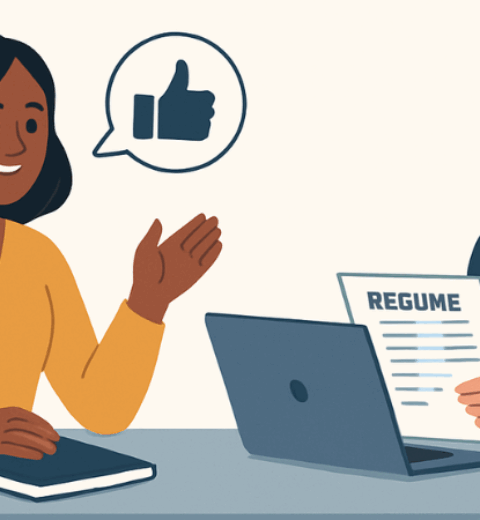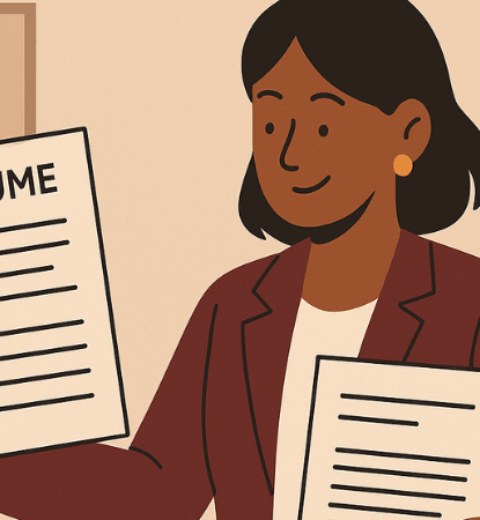Resume gaps are more common than ever in 2025 but they’re still one of the most nerve-wracking topics in job interviews.
Whether it was due to layoffs, caregiving, personal health, relocation, or upskilling, recruiters want to know how you spent that time, and what you learned from it.
The good news? You don’t need to hide resume gaps. You just need to know how to explain them with confidence, clarity, and relevance.
In this blog, we’ll walk you through how to handle this question, what hiring managers actually want to hear, and exactly what phrases to use to frame your answer professionally.
Why Employers Ask About Resume Gaps
When an interviewer sees a gap of 6+ months in your resume, they’ll likely ask:
“Can you tell me more about this period?”
This question isn’t a trap. What they’re really assessing is:
- Transparency – Are you honest about your experience?
- Growth – Did you use the time productively?
- Readiness – Are you prepared to reenter the workforce?
Recruiters today understand that life happens, but they expect you to be able to speak to it maturely and professionally.
How to Prepare Your Answer in 3 Steps
Step 1: Be Honest, But Keep It Professional
You don’t need to overshare personal details. A brief, clear explanation is all that’s needed.
Example:
“In early 2023, I took time off to care for a family member full-time. During this period, I kept my skills sharp by attending webinars and reading industry updates. Now that my caregiving responsibilities have ended, I’m excited to reenter the workforce.”
Keep your tone factual, confident, and focused on your return to work.
Step 2: Emphasize What You Gained or Maintained
Even if you weren’t working, it’s likely you still:
- Took courses or earned certifications
- Volunteered or freelanced
- Read books or followed industry trends
- Gained soft skills (resilience, time management, etc.)
Mention any relevant skill-building activities, even informal ones.
Example:
“While between roles, I completed a Google UX Design certificate and volunteered with a nonprofit on website updates. It helped me stay sharp and apply my design skills in new ways.”
Need help expressing career gaps professionally in writing? Our CV Writing Service is tailored to present your work history clearly, even with non-linear timelines.
Step 3: Pivot Toward the Present
Always end your answer in the present or future. Show that you’re focused, prepared, and ready to contribute.
“I’m now fully available for full-time roles and excited to apply my skills in a collaborative, fast-paced environment again.”
Sample Answers Based on Common Scenarios
Layoff or Position Elimination
“My role was eliminated due to company restructuring during 2024. I took some time to reassess my career goals and focus on professional development. I’ve since earned a project management certification and am excited to bring that value to my next employer.”
Career Break or Travel
“I took a break from full-time work in 2023 to travel and explore personal interests. During that time, I completed freelance work for three clients, which helped strengthen my time management and communication skills.”
Parental Leave
“After the birth of my child, I took a year off to focus on family. During that period, I stayed connected to my field through online learning and part-time consulting. I’m now ready to return to full-time work with fresh perspective and energy.”
Words & Phrases That Work Well
Use professional, non-defensive language. Here are great phrases to borrow:
- “I took a brief professional pause to…”
- “During this time, I remained engaged by…”
- “I used the opportunity to develop skills in…”
- “This experience gave me a deeper understanding of…”
- “Now that I’ve transitioned out of that period, I’m excited to…”
- “The break allowed me to refocus and realign my goals with my career path.”
How to Show Gaps on Your Resume (Without Hiding Them)
Avoid trying to “trick” employers with vague dates or misleading formatting. Instead, present your resume honestly and strategically:
- Use years only if months create visible gaps
- Group freelance work or short contracts under a single heading
- Add a section like “Career Break Activities” or “Professional Development” if appropriate
Example:
Career Pause (2023)
- Completed Certified Digital Marketing Professional course
- Volunteered with local business association on community outreach
- Stayed current with marketing trends via HubSpot Academy and blogs
Want your resume to communicate your story confidently? Our expert writers at ResumeFaster specialize in non-traditional work histories. Learn more with our LinkedIn Profile Writing Service, which pairs perfectly with your resume for a complete professional image.
What Not to Say
Avoid the following common mistakes:
- Being vague or dodging the question
- Over-explaining personal issues
- Apologizing for the gap
- Sounding unsure or uncomfortable
Instead, own your story, focus on what you gained, and express clear enthusiasm about returning to the workforce.
Final Thoughts: Gaps Aren’t Deal Breakers—Lack of Preparation Is
In 2025, resume gaps are more normalized than ever, but how you address them can make all the difference.
The best approach? Honesty, clarity, and confidence. Frame your gap as a period of transition or growth, emphasize what you’ve learned, and shift the focus toward your readiness and value as a candidate today.
If you’re not sure how to structure your resume around a gap or if you want help polishing your story for interviews ResumeFaster is here to help. Our CV Writing Services and interview coaching tools are designed to help professionals like you get back into the job market with clarity, confidence, and strategy.



